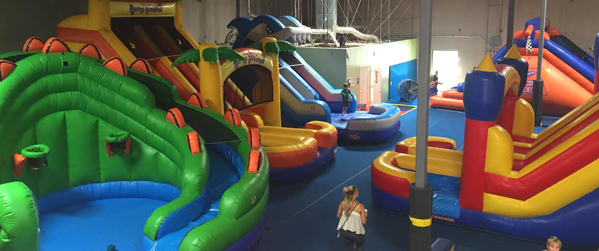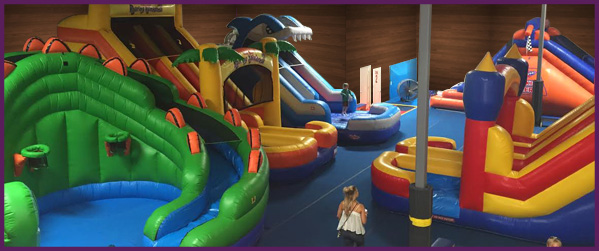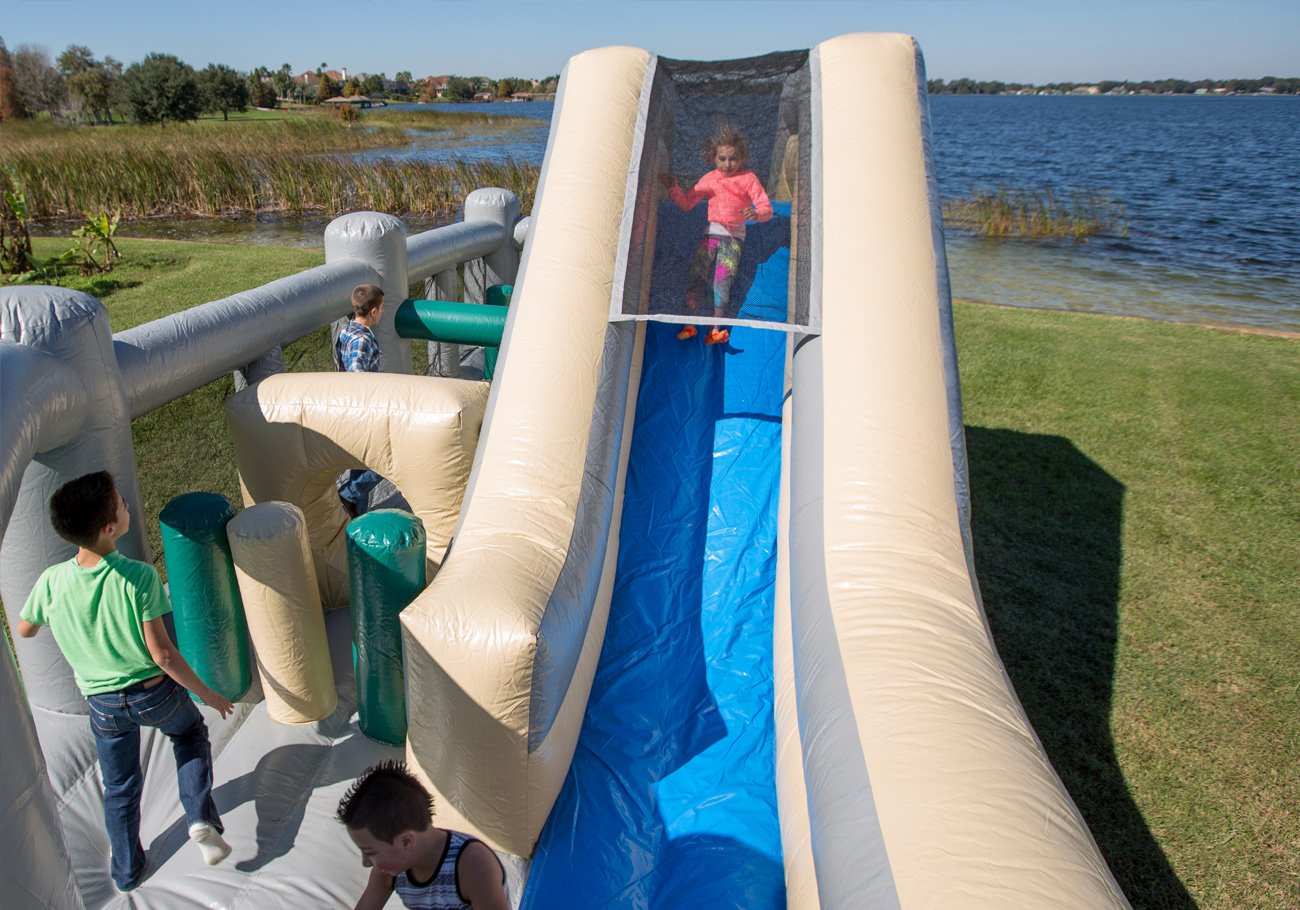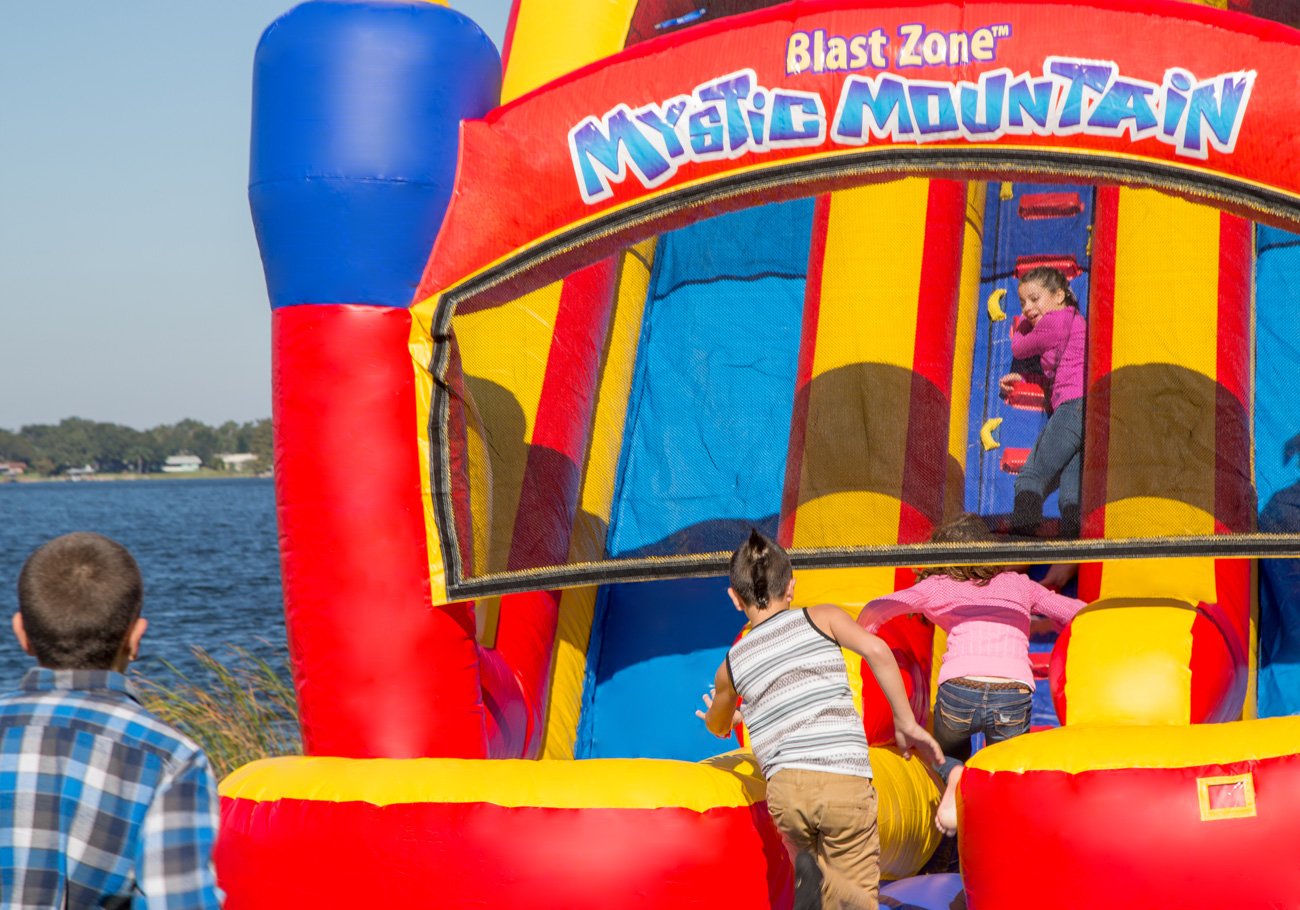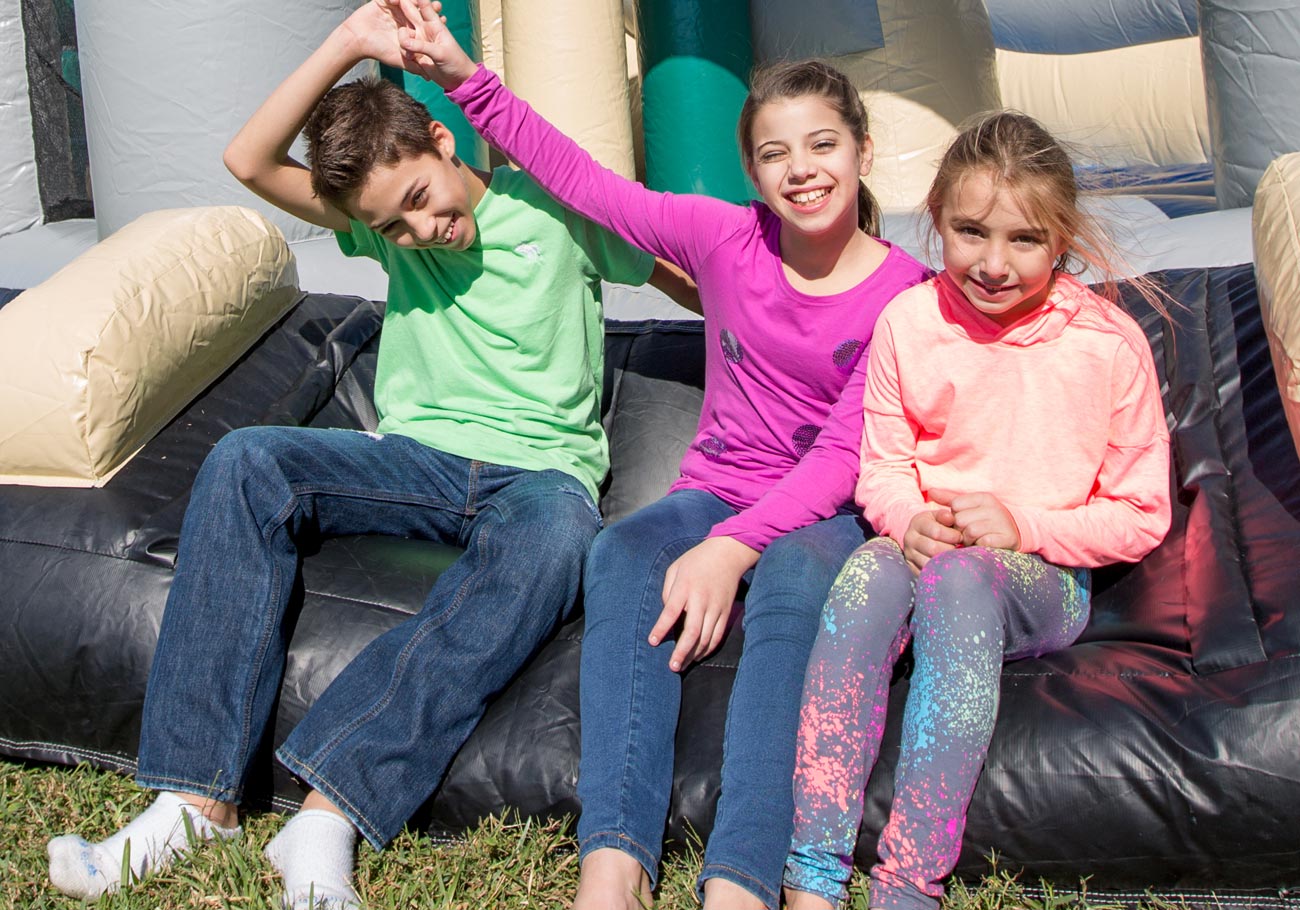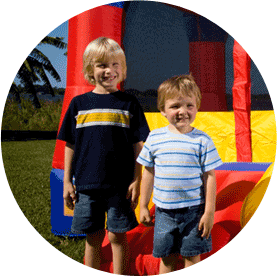Kristin Asks:
Hi, I ordered the Spray n Splash inflatable park and was planning to use it in my backyard for a pool party today. However, we have a slight slope in the yard going down, at about a 10% grade. Is this OK?
![]()
Blast Zone:
Though a level surface would be ideal, we understand that this is not possible for everyone. Because your slope is not too extreme, it should be fine. We do recommend setting the slide up so that the water does not pool up against the base of the slide. It is better to have the outer rim of the splash area to be downhill from the slide.
Please use common-sense safety practices at all times. If your location seems unsafe for any reason, do not set up your inflatable there! This would include unsafe slopes, loose soil, obstructions, power lines, bear caves, volcanoes, etc.

Luke Asks:
Do you do financing, lease to own, to individuals? Or is that only for businesses? I am really interested in financing one of your bounce houses.
![]()
Blast Zone:
We do offer financing through our third party financing partner, Leasestation. Financing is only available for commercial orders and you can apply online, directly through our website. When you submit your application, be sure to apply for the total amount that you’d need to cover all of your equipment costs. For example, if you’re interested in an inflatable that costs $2,000.00 and you also want to add accessories that cost an additional $300.00, you would want to add in the cost of the accessories from our website to the total of the inflatable to get your total equipment cost. If you are unsure of your pricing, give us a call and we’d be happy to help out.
At this time Leasestation is only offering financing to businesses, so you would require an EIN or tax ID in order to be approved. If you are planning to start up a new business and do not yet have an EIN, you can apply for one online. It takes about 15 minutes to complete the application. You can still apply without your EIN initially, but the application will be pending until an EIN is provided.
You should find out instantly whether you are approved for financing or not, but if you do not get an immediate response, it may mean that Leasestation needs a little more information from you in order to proceed. Once you have been approved for financing, give our sales team a call at 877-889-4685 and be sure to mention that your order is being financed. Once you’ve decided on the items you want and have placed an order, our sales team will transmit your order to Leasestation so that they can complete the terms of your financing. Once you have signed off on all terms, Leasestation will fund your order and your equipment will ship.
Ramona Asks:
Can adults use any of your bouncers? I want something that I can play with my kids in.
![]()
Blast Zone:
Smaller adults weighing 100 lbs or less may use most of our inflatables, but we recommend exploring our commercial grade inflatables for items that can be used by most adults and children alike. While our home use inflatables do feature a 100 lbs per person weight capacity, most of our commercial grade bouncers can support users up to 250 lbs each, with a minimum weight supported of 200lbs.
It is important to evenly match players, because a large adult sliding, tumbling, or jumping on top of a smaller child is a potentially unsafe situation (link to evenly matched players article). If you intend to play in the inflatable with your child, avoid roughhousing, and do not slide with your child in your lap.
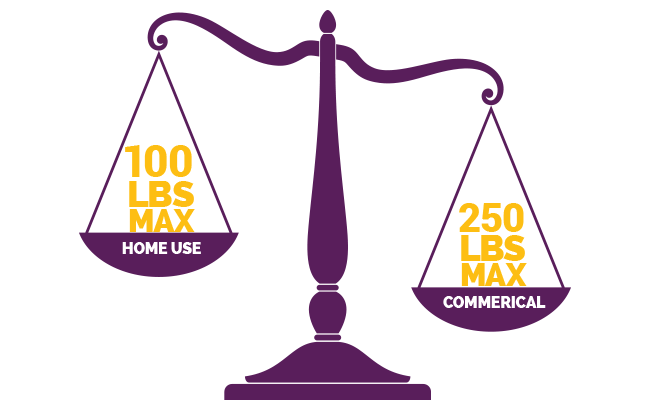
In our Blast Zone Mail Zone series, we answer good questions submitted by you, our great customers. Pardon us if we repeat ourselves occasionally. Some questions are asked frequently, and worth answering more than once!
Blast Zone appreciates your questions. If you’d like to submit a Mail Zone Question, please email us at mailbag@blastzone.com. For immediate assistance, feel free to call us at 877-889-4685, or email us at service@blastzone.com
